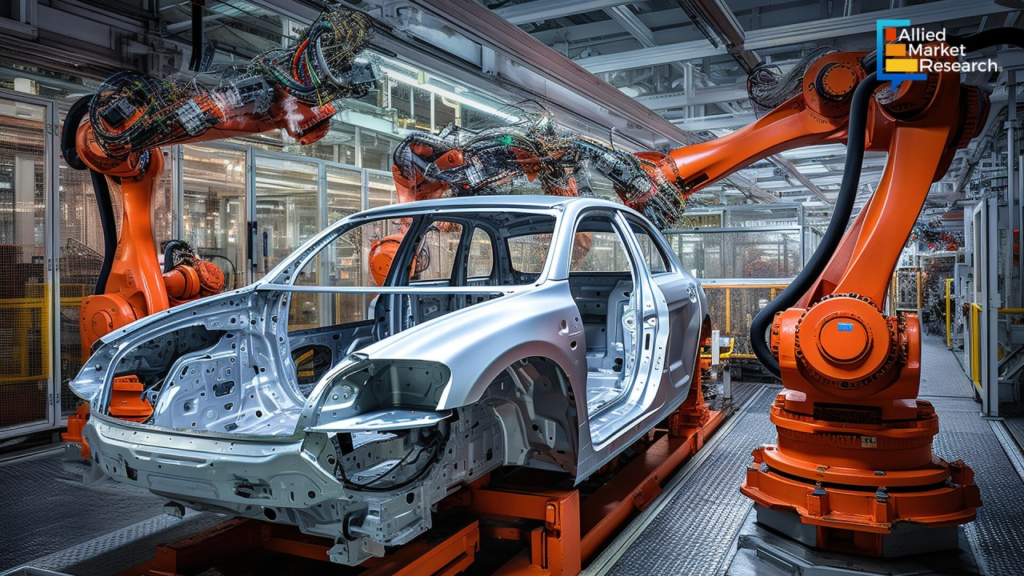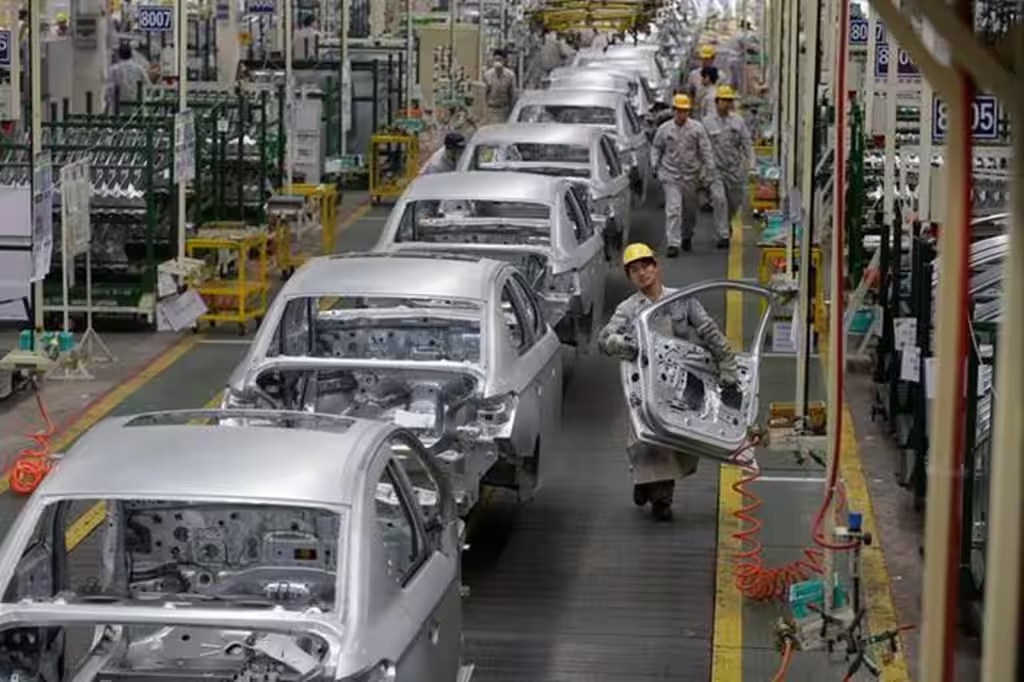The automotive industry, a cornerstone of global manufacturing and mobility, faces increasing pressure to adopt sustainable practices. As environmental concerns and regulatory pressures intensify, automakers are transforming their manufacturing processes to minimize their ecological footprint. Sustainable manufacturing in the automotive sector is not just about reducing emissions but encompasses a broader range of innovations and trends aimed at making the entire lifecycle of vehicles more eco-friendly. This article explores the latest trends and innovations in sustainable automotive manufacturing, highlighting how the industry is evolving to meet the demands of a greener future.

Understanding Sustainable Manufacturing in the Automotive Industry
Sustainable manufacturing refers to practices that aim to reduce the environmental impact of production processes while promoting social responsibility and economic efficiency. In the automotive industry, this involves optimizing the production process, utilizing eco-friendly materials, reducing energy consumption, and enhancing vehicle efficiency and recyclability. The focus is on creating a circular economy where materials are reused and waste is minimized.
Key Trends in Sustainable Automotive Manufacturing
1. Electrification of Vehicles
The shift towards electric vehicles (EVs) is one of the most significant trends in sustainable automotive manufacturing. Electrification aims to reduce greenhouse gas emissions and dependence on fossil fuels.
- Battery Technology: Advances in battery technology are critical to the success of electric vehicles. Innovations in lithium-ion and solid-state batteries promise higher energy densities, faster charging times, and longer lifespans.
- Vehicle-to-Grid (V2G) Integration: V2G technology allows electric vehicles to interact with the power grid, providing storage solutions for renewable energy and supporting grid stability.
- Extended Range: Improvements in battery technology are enabling EVs to travel longer distances on a single charge, addressing one of the major concerns of potential buyers.
2. Use of Recycled and Sustainable Materials
Automakers are increasingly using recycled and sustainable materials to reduce the environmental impact of vehicle production. This includes:
- Recycled Plastics: Many manufacturers are incorporating recycled plastics into vehicle interiors and exterior parts. This reduces the demand for virgin plastic and lowers overall carbon emissions.
- Bio-based Materials: Materials derived from renewable sources, such as plant-based fibers and biodegradable composites, are being used in place of traditional petroleum-based products.
- Sustainable Sourcing: Companies are focusing on sourcing materials responsibly, ensuring that raw materials are obtained through sustainable practices that minimize environmental impact.
3. Energy Efficiency in Manufacturing Processes
Reducing energy consumption during the manufacturing process is crucial for sustainable automotive production. Key strategies include:
- Renewable Energy: Automakers are investing in renewable energy sources such as solar, wind, and hydroelectric power to fuel their manufacturing facilities. This shift helps lower carbon emissions and reduce reliance on fossil fuels.
- Energy-Efficient Equipment: The use of energy-efficient machinery and technologies, such as LED lighting and advanced HVAC systems, helps lower the energy consumption of manufacturing plants.
- Process Optimization: Implementing lean manufacturing principles and optimizing production processes contribute to energy savings and reduced waste.
4. Emphasis on Circular Economy
The concept of a circular economy involves designing products and processes that promote the reuse, recycling, and regeneration of materials. In the automotive industry, this approach includes:
- Design for Disassembly: Vehicles are being designed to facilitate easy disassembly, making it simpler to recycle components and materials at the end of their life cycle.
- Recycling Programs: Automakers are establishing recycling programs to reclaim valuable materials from end-of-life vehicles. This includes recycling metals, plastics, and other components.
- Closed-Loop Systems: Some manufacturers are implementing closed-loop systems where materials from old vehicles are reused in the production of new ones, reducing the need for raw material extraction.
5. Digitalization and Automation
Digital technologies and automation are playing a significant role in enhancing the sustainability of automotive manufacturing. Key developments include:
- Industry 4.0: The integration of IoT, AI, and data analytics in manufacturing processes helps optimize operations, reduce waste, and improve overall efficiency.
- 3D Printing: Additive manufacturing, or 3D printing, allows for the production of parts with minimal waste and energy consumption. It also enables rapid prototyping and customization of vehicle components.
- Smart Factories: The use of smart technologies in factories enhances monitoring and control of manufacturing processes, leading to reduced energy consumption and lower environmental impact.

Innovations Driving Sustainable Automotive Manufacturing
1. Hydrogen Fuel Cells
Hydrogen fuel cell technology represents a promising alternative to battery-powered electric vehicles. Hydrogen fuel cells generate electricity through a chemical reaction between hydrogen and oxygen, emitting only water vapor as a byproduct.
- Advantages: Hydrogen fuel cells offer fast refueling times and long driving ranges, addressing some of the limitations of battery-powered EVs.
- Challenges: The development of hydrogen infrastructure and the production of green hydrogen are key challenges that need to be addressed for widespread adoption.
2. Advanced Lightweight Materials
Reducing vehicle weight is crucial for improving fuel efficiency and reducing emissions. Advanced lightweight materials, such as carbon fiber and advanced aluminum alloys, are being used to achieve these goals.
- Carbon Fiber: Carbon fiber composites offer high strength-to-weight ratios, contributing to lighter and more fuel-efficient vehicles.
- Aluminum Alloys: Lightweight aluminum alloys are increasingly used in vehicle frames and components, helping to reduce overall vehicle weight and improve performance.
3. Autonomous Vehicles
Autonomous or self-driving vehicles have the potential to enhance sustainability by optimizing driving patterns and reducing traffic congestion.
- Efficiency Improvements: Autonomous vehicles can optimize driving routes and reduce idling, leading to lower fuel consumption and reduced emissions.
- Safety Enhancements: Advanced driver assistance systems (ADAS) and autonomous driving technologies contribute to safer roads, potentially reducing accidents and their associated environmental impact.

Case Studies of Sustainable Automotive Manufacturing
1. Tesla
Tesla is a leading example of a company driving sustainable automotive manufacturing. The company’s focus on electric vehicles, renewable energy integration, and innovative manufacturing processes underscores its commitment to sustainability.
- Gigafactories: Tesla’s Gigafactories are designed to produce batteries and vehicles with minimal environmental impact, utilizing renewable energy sources and energy-efficient technologies.
- Battery Recycling: Tesla is developing recycling programs for its batteries to reclaim valuable materials and reduce waste.
2. BMW
BMW has implemented a range of sustainable practices in its manufacturing processes, from using recycled materials to optimizing energy use.
- Circular Economy: BMW’s “i” series vehicles are designed with a focus on circular economy principles, including the use of sustainable materials and recycling programs.
- Renewable Energy: BMW’s manufacturing plants are powered by renewable energy sources, contributing to lower carbon emissions.
3. Toyota
Toyota is known for its commitment to sustainability through its hybrid and hydrogen fuel cell technologies.
- Hybrid Vehicles: Toyota’s hybrid vehicles, such as the Prius, have set benchmarks for fuel efficiency and emissions reduction.
- Hydrogen Technology: Toyota’s Mirai is an example of the company’s investment in hydrogen fuel cell technology as a sustainable alternative to conventional vehicles.
Challenges and Future Directions
While sustainable manufacturing in the automotive industry is making significant strides, several challenges remain:
- Cost: The upfront costs of implementing sustainable technologies and materials can be high, posing challenges for widespread adoption.
- Infrastructure: The development of infrastructure for electric and hydrogen vehicles, such as charging stations and refueling stations, is essential for supporting the growth of sustainable transportation.
- Regulation and Standards: Developing and enforcing regulations and standards for sustainability in the automotive industry is crucial for ensuring consistency and progress.

Conclusion
Sustainable manufacturing in the automotive industry represents a crucial shift towards minimizing environmental impact while enhancing the efficiency and durability of vehicles. As trends and innovations continue to evolve, automakers are increasingly adopting practices that promote electrification, use of recycled and sustainable materials, energy efficiency, and circular economy principles. The integration of digital technologies and advancements in materials and fuels further drive the industry towards a greener future. While challenges remain, the ongoing commitment to sustainability and the development of innovative solutions are paving the way for a more environmentally friendly automotive industry.
Stay tuned for more updates, only on QAWire


